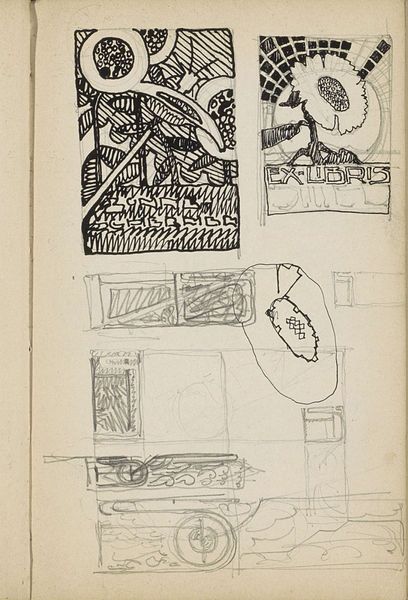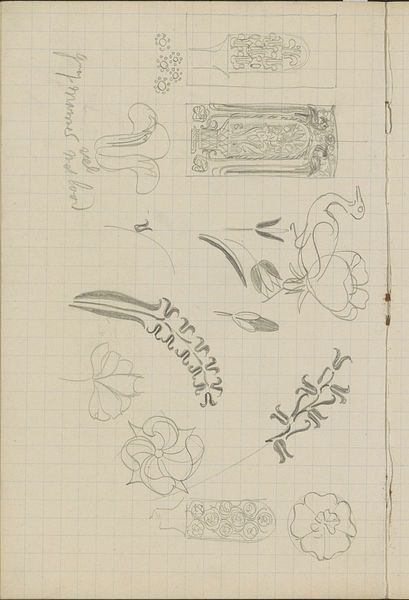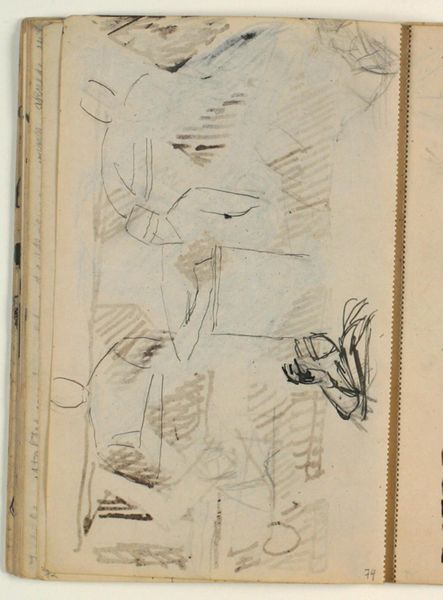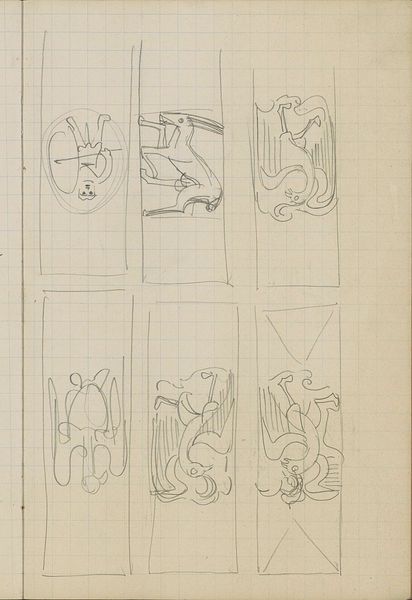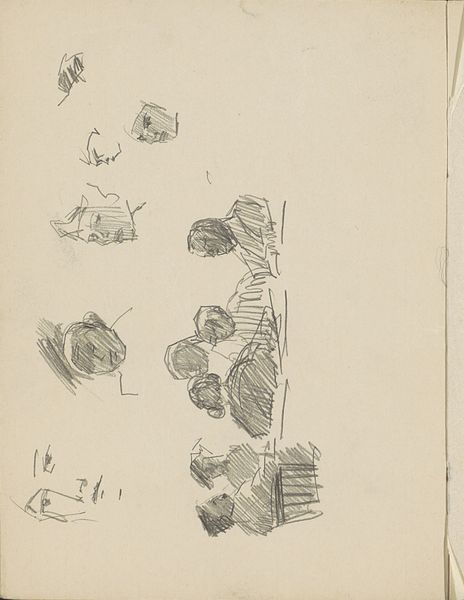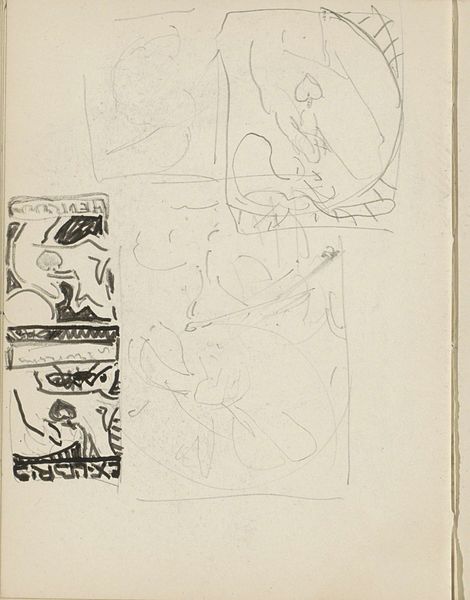
#
sketch book
#
hand drawn type
#
flower
#
personal sketchbook
#
idea generation sketch
#
sketchwork
#
pen-ink sketch
#
pen work
#
sketchbook drawing
#
storyboard and sketchbook work
#
sketchbook art
Copyright: Rijks Museum: Open Domain
Curator: What strikes me right away about this page from Reijer Stolk’s sketchbook, created around 1919, is the sheer exuberance. It's like peering into a mind brimming with ideas, nature, and letters all clamoring to take shape. Editor: I'm immediately drawn to the relationship between ornament and functionality suggested here. The Art Nouveau style evident in the leaf motifs contrasts sharply with the blocky letter designs, revealing a tension between aesthetics and utility that defines much of early 20th-century design. What's your take on this potential struggle, Curator? Curator: Struggle is an interesting word for it! Maybe "dance" is more fitting. To me, the combination isn't a battlefield but rather a sandbox. Stolk seems gleefully unconcerned with rigidly defining where the art stops and the function begins. Those blossoming flower sketches, playfully jumbled with the planned ornaments, lend this to the reading of artistic play. Editor: I'd agree to a playful negotiation, not an outright struggle, as I see an attempt to synthesize seemingly disparate elements, echoing the socio-political efforts toward finding unity after the first World War through design, especially given its dating to 1919. Consider the social function of such design. Curator: It certainly does feel optimistic, and maybe you're right: I’m a sucker for thinking artists are just having fun! But perhaps Stolk was deliberately forging a connection between natural beauty and the burgeoning industrial world—making peace with machinery and organic form, all with his pen and paper. It's beautiful to think that art-making could have a purpose. Editor: Absolutely, and this blending offers an insight into the design aspirations of the era, where ornamentation wasn’t merely superficial but intertwined with a push toward democratizing design access. Sketchbooks such as this illuminate not just individual artistic processes but the wider movement seeking accessibility in aesthetics in everyday life and, I argue, beyond. Curator: So, it's more than pretty pictures; it's a quietly radical statement? I’ll take that with me! Editor: It certainly could be viewed that way, yes, by recognizing design as intrinsic to social and political transformation. And isn't that what makes revisiting works such as this, especially ones initially as straightforward-seeming as a sketchbook, so continuously enriching?
Comments
No comments
Be the first to comment and join the conversation on the ultimate creative platform.
